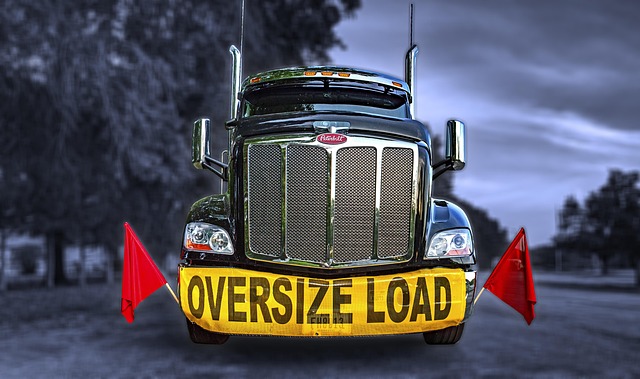Registering a car in California is a straightforward process, but understanding the requirements and gathering the right documents is essential. This guide will walk you through each step, from ensuring your Vehicle Identification Number (VIN) accuracy using a reliable VIN verifier to completing the registration online or in-person. By following these simple steps, you’ll have your California vehicle plates in no time.
- Understand California Car Registration Requirements
- Gather Necessary Documents for Vehicle Registration
- Verify Vehicle Identification Number (VIN) Accuracy
- Complete Online or In-Person Registration Process
- Pay California Vehicle Registration Fees
Understand California Car Registration Requirements

Before registering your car in California, it’s crucial to understand the state’s specific requirements. Unlike some other states, California mandates a thorough vehicle inspection process, ensuring that all cars on the road meet safety and emissions standards. This typically involves a comprehensive vin inspection, where the unique identifier number (VIN) of your vehicle is verified for authenticity and checked against any reported issues or accidents. The state employs advanced vin verifier technology to streamline this process, making it easier for both owners and registration centers.
For convenience, many California residents opt for mobile vin verification services, which allow them to complete the necessary checks from the comfort of their homes or places of business. This modern approach, facilitated by innovative vin inspection tools, simplifies what was once a cumbersome administrative task, contributing to a smoother registration experience.
Gather Necessary Documents for Vehicle Registration

Before you start the registration process, make sure to gather all the essential documents required by the California Department of Motor Vehicles (DMV). One crucial document is the Vehicle Identification Number (VIN) verifier, which can be obtained through a mobile VIN inspection or verification service. These services allow you to quickly and conveniently get the necessary details from your vehicle’s VIN using a smartphone app or an online platform.
Additionally, you’ll need proof of ownership, typically in the form of a title or bill of sale, along with valid identification documents such as a driver’s license or state ID card. If the car is being imported, you might require additional paperwork like export papers or a customs release document. Always check the DMV’s website for the most up-to-date list of required documents to ensure a smooth registration process.
Verify Vehicle Identification Number (VIN) Accuracy

Before registering your car in California, ensuring the Vehicle Identification Number (VIN) is accurate is crucial. This unique 17-character code is a vital part of your vehicle’s history and identification. Double-check that the VIN on your car matches the one provided by the manufacturer or through reliable online sources. Any discrepancy could lead to registration issues later on.
A vin verifier, whether it’s done through a mobile vin verification service or during a vin inspection, is an essential step in this process. This simple check can save you time and potential headaches down the line, especially as California’s Department of Motor Vehicles (DMV) requires accurate information for registration purposes.
Complete Online or In-Person Registration Process

In California, registering your car can be done either online or in-person at a DMV office. The process is straightforward and involves several key steps. For convenience, many opt for the mobile vin verification option, which allows them to complete registration from the comfort of their home or on the go. This method typically begins with entering your vehicle’s unique Vehicle Identification Number (VIN) into an authorized online platform. A mobile vin verifier or inspection tool is used to ensure the accuracy and authenticity of this number, a crucial step in the registration process as it verifies the car’s history and ownership.
Once your VIN has been verified, you’ll need to gather necessary documents, including proof of insurance, proof of identification, and the completion of an application form. For in-person registration, visiting a DMV office with these documents is required. Alternatively, many online registration services offer a seamless digital experience, allowing you to upload documents electronically and receive your registration paperwork digitally as well. This modern approach streamlines the process, making car registration faster and more efficient than ever before.
Pay California Vehicle Registration Fees

After completing your vehicle’s registration application, it’s time to settle the fees required by California for registering your car. These fees vary based on several factors such as the type and age of your vehicle. One crucial step before submitting your application is conducting a Vehicle Identification Number (VIN) inspection or using a reliable mobile VIN verification service to ensure all details are accurate.
This fee includes not just the registration cost but also the emissions testing fee, which is mandatory for most vehicles in California. You can pay these fees online through the DMV’s website, by mail, or in person at a local DMV office. Additionally, many counties offer drop-off locations or partner with various automotive service centers to facilitate a smoother and more convenient registration process, including mobile VIN inspection services that can further simplify the process from your comfort zone.
Registering a car in California is a straightforward process that involves understanding key requirements, gathering essential documents, and completing the registration application. By verifying your Vehicle Identification Number (VIN) using a reliable VIN verifier, you ensure accuracy and expedite the process. Whether opting for online or in-person registration, paying the necessary fees, and adhering to all regulations will have you and your vehicle legally registered in no time.
